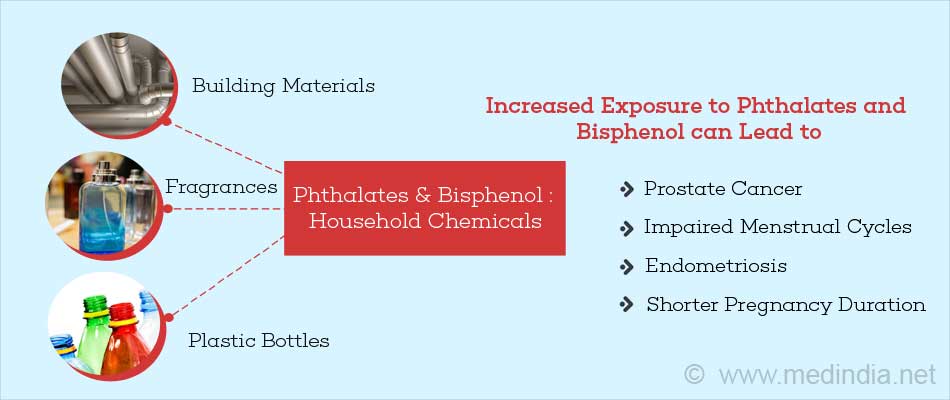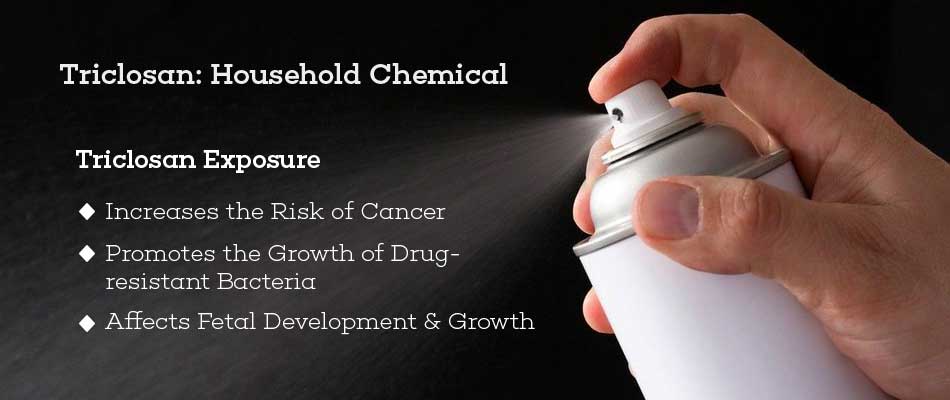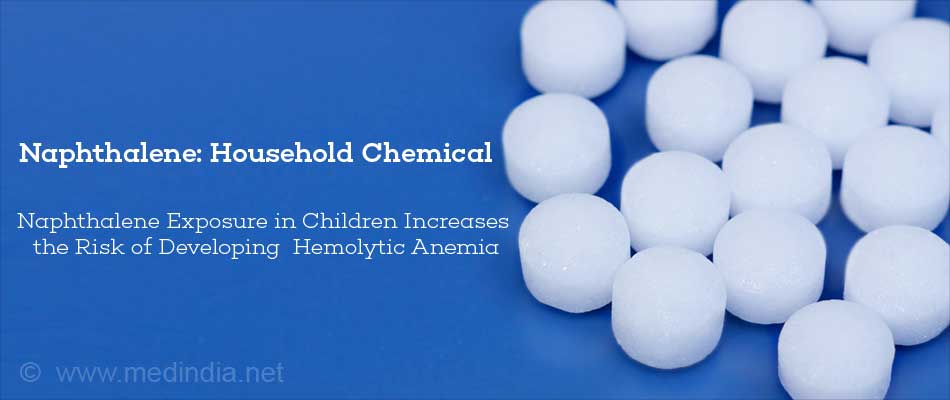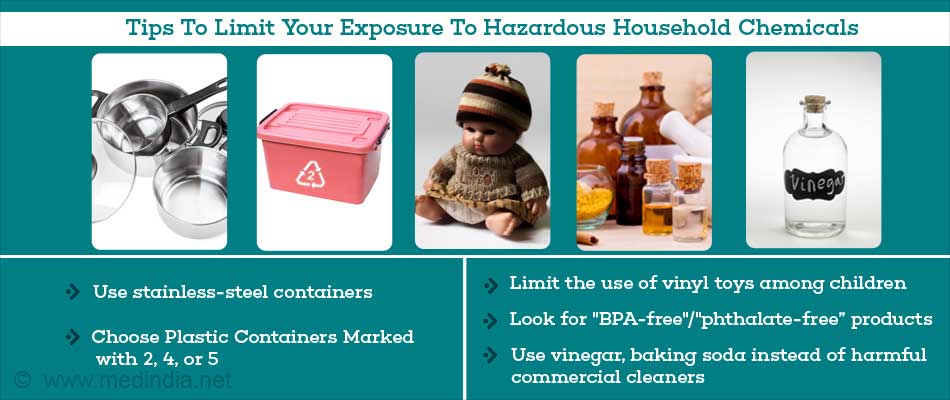- In utero exposure to di-(2-ethylhexyl)phthalate and duration of human pregnancy. - (https://www.ncbi.nlm.nih.gov/pubmed/14594632/)
- Hazardous substances in frequently used professional cleaning products - (https://www.ncbi.nlm.nih.gov/pmc/articles/pmc4096065/)
- Household chemicals: management of intoxication and antidotes - (https://www.ncbi.nlm.nih.gov/pubmed/20358689)
- Public Health Statement for Tetrachloroethylene (PERC) - (https://www.atsdr.cdc.gov/phs/phs.asp?id=263&tid=48)
- Recent Evidence Regarding Triclosan and Cancer Risk - (https://www.ncbi.nlm.nih.gov/pmc/articles/pmc3945593/)
- Naphthalene Mothballs: Emerging and Recurring Issues and their Relevance to Environmental Health - (https://www.ncbi.nlm.nih.gov/pmc/articles/pmc3850774/)
- Household Chemicals Chart: Whats in my House - (https://my.clevelandclinic.org/health/articles/household-chemicals-chart-whats-in-my-house)
- The Facts About Ammonia - (https://www.health.ny.gov/environmental/emergency/chemical_terrorism/ammonia_general.htm)
- Phthalates and Cumulative Risk Assessment: The Tasks Ahead. - (https://www.ncbi.nlm.nih.gov/books/nbk215044/)
- Phthalates and other additives in plastics: human exposure and associated health outcomes - (https://www.ncbi.nlm.nih.gov/pmc/articles/pmc2873014/)
- WHO Guidelines for Indoor Air Quality: Selected Pollutants. - (https://www.ncbi.nlm.nih.gov/books/nbk138706/)
What are Hazardous Household Chemicals?
House maintenance is an important determinant of health, and a variety of household products are used in the upkeep of a house. Cleaning products are most widely used and may also include air fresheners, pesticides, and so on. Substances found in these products generally include detergents, corrosives, alcohols, hydrocarbons, and some of the essential oils. If used within specified limits they have no adverse effects, however, if not properly stored or used, these products could harm a person’s health, even resulting in life-threatening problems.
Continuous exposure to certain household chemicals, including through air, water, food, or other sources results in adverse health impacts. A growing number of studies have identified that chemical substances present in cleaning products, could be responsible for adverse health effects of the skin and the respiratory tract. According to WHO report 2012, 23% of all estimated global deaths were linked to the environment. The household air pollution was responsible for 4.3 million deaths, and 7.7% of the global mortality.
List of Hazardous Household Chemicals and their Impact on Health
Let’s have look at the most common hazardous household chemicals, and their negative impact on health.
1. Phthalates and Bisphenol A
Phthalates are the chemicals that are used in a variety of everyday products containing fragrance. Such products include air fresheners, personal hygiene products like various cosmetic products. High molecular weight phthalates are also used to make containers, vinyl toys, vinyl floor coverings, plastic bottles, eyeglasses and even building products & water pipes.
Phthalates and Bisphenol A are considered as endocrine-disrupting compounds (EDCs). Many studies reveal that they could lead to adverse reproductive and developmental effects. In men, exposure to EDCs may be associated with reduced reproductive capacity or increased risk of prostate cancer. Long term use may lead to alteration at the hormonal level which is associated with increased risk for endometriosis, impaired oocyte competence, & menstrual cycles. According to a study, phthalate exposure was also significantly associated with shorter pregnancy duration.

2. Perchloroethylene or "PERC"
Perchloroethylene (PERC), is also known as tetrachloroethylene. It is used as a dry cleaning agent and metal degreasing solvent. Products like aerosol, dry cleaning products, printers, adhesives, cleaning fluids for rugs, paint removers, spot removers and typewriter correction fluids contain this chemical. Studies reveal that tetrachloroethylene can be carcinogenic in humans. Centers for Disease Control and Prevention report suggest that animals exposed to tetrachloroethylene had adverse effects on their liver and kidney. Fumes caused from tetrachloroethylene may also cause dizziness, nausea, loss of appetite and disorientation.
3. Ammonia
Ammonia is a common constituent of commercially available household products. It is mostly found in polishing agents that is used to bring back the sheen in bathroom fixtures, sinks, jewelry and window panes. Ammonia is also found in glass cleaners, oven cleaners and stainless-steel cleaners. Its high concentration in environment may be hazardous to the eyes and upper respiratory tract. When ammonia enters the body, it reacts with water to produce ammonium hydroxide. It is very corrosive and damages cells in the body on contact. Its fumes can irritate eyes and lungs and can also cause burns or rashes on skin. Inhalation of lower concentrations can cause coughing, and burning sensation in the nose and the throat. Those with allergies and asthma are more sensitive to the exposure of ammonia as it can trigger them.
4. Triclosan
Triclosan is a broad-spectrum antibacterial commonly used in cosmetics, liquid dish washing detergents, hand soaps, dentifrices, and other consumer products. Triclosan, is an aggressive antibacterial agent that can promote the growth of drug-resistant bacteria. Reports have shown that it is a potential endocrine disruptor and might subsequently affect fetal development and growth. Studies have also been performed to investigate triclosan’s estrogenic action in cultured cancer cells. The results of the studies suggest that triclosan exposure (up to 20 ìg/mL) may induce proliferation or antagonize estradiol. This can be a risk factor for cancer development.

5. Butoxyethanol
This chemical is found mostly in cleaning products including surface cleaners, floor strippers, window cleaners, spot cleaners, rust removers and ink removers. It belongs in the category of glycol ethers which are found to adversely affect human health. When inhaled it can cause sore throats and can also contribute to narcosis, pulmonary edema liver and kidney damage. Exposure to ethylene glycol monomethyl ether disrupts limb development in vitro, and is also found to induce biomarkers of cell cycle arrest and apoptosis.
6. Naphthalene
Naphthalene is used in the living room as rug, carpet, upholstery cleaners and in the bedrooms, bathrooms and cupboards as mothballs or disinfectants. Naphthalene, is also used in paints and in the production of the insecticide carbaryl that is used in home yards and gardens. It is also used as a solid block deodorizer for toilets. Studies reveal that exposure of infants and children to naphthalene can lead to a glucose-6-phosphate dehydrogenase deficiency and increased susceptibility to hemolytic anemia. The effect of naphthalene has also been studied on the induction of apoptosis and gene expression profiles in cord blood cells. The results revealed that it modified cord blood gene expression and decreased the level of RNA-binding protein FUS/TLS. Inhalation of naphthalene can also cause headaches, dizziness, and irritated skin, eyes, and throat and also cataract formation on prolonged exposure.

7. Chlorine
Commonly found in mold and mildew removers, scouring powders, toilet bowl cleaners, laundry whiteners, and household tap water. Exposure to chlorine can be through fumes or possibly through skin while drinking or cleaning with a product containing the chemical. Chlorine inhalation toxicity can occur as a result of daily swimming pool usage, or by misuse of domestic cleaners. Nowadays, the use of bleach combined with Hydrogen chloride (HCl) in modern societies has led to a spectrum of serious abnormalities such as reactive airways dysfunction syndrome (RADS) and adult respiratory distress syndrome. Furthermore, most public systems use chlorine as a disinfectant and that might have a hazardous impact on human cholesterol metabolism.
How to Limit Exposure to Hazardous Household Chemicals?
The use of everyday household products can lead to hazardous health impacts. So, their use must be limited to secure overall safety of health. The public health community centers are also developing, testing, and implementing effective interventions that can result in health benefits through improved housing quality.
- Use refillable glass, porcelain and stainless-steel containers for food and beverages, particularly for hot foods and liquids.
- Check the bottom of plastic containers before consuming anything from the container. Avoid use of plastic containers marked with a 1 or a 7 pc (polycarbonate) and instead choose those marked with a 2, 4, or 5. This helps reduce the exposure to bisphenol A (BPA) and phthalates.
- To minimize exposure to phthalates in babies, use feeding bottles made from glass with silicone nipples are recommended and limiting the use of vinyl toys.
- Choose fragrance-free products whenever possible.
- While buying products like baby feeding bottles, food containers, teethers, shampoo and lotions, look for "BPA-free" and/or "phthalate-free” products.
- Vinegar can help soften clothes and get rid of static. This method can limit the exposure of Quats, used in form fabric softeners, and other cleaning chemicals.
- Instead of using 2-Butoxyethanol based window, kitchen and multipurpose cleaners, use a piece of newspaper dabbed in diluted vinegar. Also, common kitchen ingredients like with baking soda, vinegar and essential oils can be used to reduce the harmful effects of commercial cleaners.
- To reduce exposure to chlorine through tap water, install filters in the kitchen sink and in the shower.
- Aerosols contain a lot of harmful chemicals, use pump spray containers instead of aerosols.
- While choosing personal care products, look for unscented and natural dyes in products to avoid potential allergic reactions.







